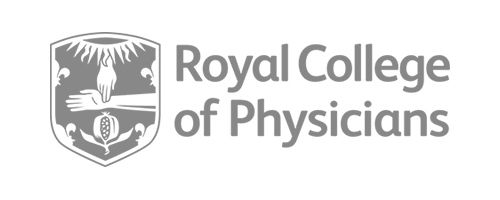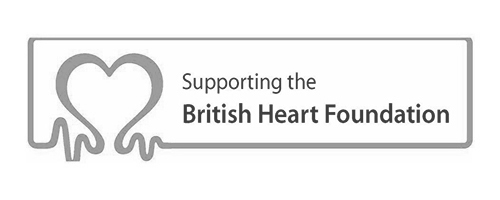COMMON CARDIOLOGICAL CONDITIONS
Cardiological Conditions
The information outlined below on common conditions and treatments is provided as a guide only and it is not intended to be comprehensive.
Discussion with Dr McAloon is important to answer any questions that you may have. For information about any additional symptoms you may be suffering from that are not featured within the site, please contact us for more information.
Normally, your cardiologist will see you promptly and arrange for a resting Electrocardiogram (ECG) and an Exercise Treadmill (ETT). If you are unable to perform physical exercise for any reason, such as arthritis or other physical disability, your cardiologist may well arrange a different type of non-invasive test, such as a cardiac MRI. If your cardiologist thinks you are at significant risk, he may arrange for you to have a Coronary Angiogram with a view to proceeding to Coronary Angioplasty (percutaneous coronary intervention or PCI).
Medical therapy:
When Angina is suspected the cardiologist may start drug treatment which could include:
• GTN spray-to help you if you get pain
• Aspirin to thin the blood
• A cholesterol lowering tablet (statin)
• Other medications which may include Beta-blockers, Calcium channel blockers, Nitrates, Nicorandil, Ranolazine or Ivabradine
This is a relatively common abnormality of the heart rhythm and occurs with increasing frequency with age. It is due to the normal synchronised beating of the top chambers of the heart (“the atria”) becoming disorganised. It often found in association with excessive alcohol consumption, heart muscle disorders, heart blood supply problems, high blood pressure and heart valve disease.
Symptoms and investigation
AF can lead to palpitations, breathlessness, chest pain and also blackouts. Not all patients have symptoms. It can be identified incidentally because the pulse is irregular. Smart watches can sometimes pick irregular heart rhythms.
In addition, there is an associated risk of blood clots in the heart, which in turn increase the risk of stroke. For this reason, treatment of AF is directed firstly at both reducing stroke risk with blood thinners, and also at treating the symptoms by controlling the heart rate and/or rhythm.
AF is initially suspected by feeling your pulse. The diagnosis needs confirmation with an electrocardiogram (ECG). Often blood tests will be taken to look for possible causes of AF, and an echocardiogram (TTE) will be needed to determine if you have a structural heart problem. A heart rhythm ECG monitor may be needed to see how fast you are going at other times, and if there are any other rhythm abnormalities present.
Treatment
The cardiologist will prescribe either warfarin, aspirin or one of the newer blood-thinning drugs, to reduce the stroke risk (see below). In addition, he/she may give you drugs to slow the heart rate down, such as betablockers or digoxin. He/she may suggest trying to get the heart beat regular again – cardioversion . This can be done with drugs or with the application of an electrical treatment whilst you are sedated. You may need catheter ablation therapy, if you are very symptomatic.
Heart failure (HF) is generally defined as the inability of the heart to supply sufficient blood flow to meet the needs of the body.
HF can cause a several symptoms, including shortness of breath, leg swelling, and exercise intolerance.
Types of Heart Failure
Reduced ejection fraction HF (HFrEF) or systolic HF occurs when the heart is not able to pump sufficient blood around the body to maintain the metabolic needs of the body. It normally occurs when the heart muscle has been damaged, for example, by a heart attack or by a disease of the heart muscle called a cardiomyopathy. It can also be caused if the valves are too narrow or leaking.
Preserved ejection fraction HF (HFpEF) or diastolic HF refers to the inability of the heart muscle to relax and prime itself with enough blood for the next pumping cycle. The causes of diastolic heart failure are numerous, including high blood pressure.
Both of these mean the heart muscle is stiff, does not relax easily, and the heart therefore does not fill with blood. Accordingly, each heart cycle pumps less blood forward, is less efficient and the patient is aware of significant breathlessness on exertion.
Diagnosis of Heart Failure
Several investigations are used to diagnose HF. The principle investigation is an echocardiogram to see how well the heart pumps, whether there is evidence of heart muscle damage or heart valve disease. An Electrocardiogram (ECG) is helpful to look at the heart and determine if there has been a previous heart attack, thickening of the heart muscle or if there is any evidence of an arrhythmia (like AF). Looking for evidence of coronary artery disease can be helpful to look for a cause of HF either with a Coronary Angiogram or a Computerised Tomography Coronary Angiogram (CTCA). A special scan called a Cardiac MRI (Magnetic Resonance Imaging) may be needed to assess the heart in more detail and look for the potential cause.
Treatment of Heart failure
Identifying the cause of HF may allow specific treatments to be implement. Treating fluid overload with fluid restriction and water tablets (diuretics) can help treat the symptoms. Several classes of drugs are known to increase survival in heart failure, specifically HFrEF. Beta-blockers, angiotensin converting enzyme inhibitors (ACEI) or angiotensin receptor blockers (ARBs) will be prescribed to most patients. If symptoms are more severe, aldosterone antagonists such as spironolactone and epleronone may be used. Newer agents such as ivabradine and sacubotril valsartan can be very useful.
There are additional options that may help certain types of HF. Advanced cardiac device can be very helpful. A Biventricular Pacemaker (or cardiac resynchronisation therapy) can make the heart beat stronger if the heart is ‘desynchronised’. The presence on the ECG of a heart conduction disorder called ‘bundle branch block’ together with severe HFrEF suggests a Biventricular Pacemaker may be helpful.
If one or more of the heart valves becomes damaged or diseased, it can affect the flow of blood through the heart. If this causes you problems, it may need treatment with medicines or surgery.
There are four chambers in your heart and the valves make sure that the blood flows through them in one direction.
What happens if a valve becomes diseased or damaged?
A diseased or damaged valve can affect the flow of blood in two ways:
If the valve does not open fully, it will obstruct or restrict the flow of blood. This is called valve stenosis or narrowing. This can put extra strain on the heart, making it pump harder to force the blood past the narrowing.
If the valve does not close properly, it will allow blood to leak backwards. This is called valve incompetence or regurgitation or a leaky valve. This can put extra strain on the heart and may mean that your heart has to do extra work to pump the required volume of blood.
A valve can be narrowed and leaky at the same time as well.
What causes heart valve disease?
The main causes of heart valve disease are:
- being born with an abnormal valve or valves (congenital heart disease)
- having had rheumatic fever in the past
- cardiomyopathy – a disease of the heart muscle (valves are closely linked to the heart muscle)
- damage to the heart muscle from a heart attack
- getting older
- a previous infection with endocarditis.
What are the symptoms of heart valve disease?
Patients with heart valve disease may not have any symptoms. If symptoms develop / are present there can be getting out of breath, swelling of the ankles / feet and getting unusually tired.
How is heart valve disease diagnosed?
Taking pictures of the heart and the valves is how the diagnosis is made. The main test to make this diagnosis is transthoracic echocardiography (ultrasound scan of the heart).
How is heart valve disease treated?
Heart valve disease often does not need immediate treatment and simply needs to be kept under surveillance every year or couple of years depending on the type and severity.
Heart valve disease can advance and may need treatment with medicine. In severe cases valve disease may require surgery or other types of interventional procedures.
If your blood pressure is consistently above the target of 140/90 you need further assessment. If you have diabetes mellitus, then any blood pressure over 130/80 probably needs further assessment.
Assessing High Blood Pressure
Blood pressure should be assessed in the context of all your cardiovascular risk factors, including your age, gender, cholesterol level, smoking history and family history. In addition, some basic blood tests, an Electrocardiogram (ECG) and an Echocardiogram (TTE), are often performed to assess your risk further. A 24-hour blood pressure monitor may help assess treatment quality, and to decide if treatment is really warranted in borderline cases.
Treating hypertension
Blood pressure is lowered by:
Stopping smoking
Losing weight
Exercising
Low salt, high fibre diet
Medication
There are national guidelines on the choice of drug treatment. Most patients will need more than one drug to achieve blood pressure control.
Pericarditis is inflammation of the pericardium, the protective sac that surrounds your heart. The pericardium has two layers (inner and outer) and can become inflamed if blood or fluid leaks between these two layers.
What are the symptoms of pericarditis?
Symptoms of pericarditis include:
- chest pain that feels like a stabbing sensation
- pain in the neck that may spread across the shoulders and/or arms
- a fever
- nausea (feeling like you want to vomit)
- feeling light headed
- a sudden shortness of breath (if you experience this get urgent medical help).
The pain can sometimes get worse when you’re lying down and better when you’re leaning forward.
What causes pericarditis?
The cause of pericarditis is not always known (idiopathic). It is a complex condition that can have many causes.
Pericarditis can be caused by:
- a virus or bacterial infection
- another inflammatory condition (such as rheumatoid arthritis)
- inflammation of the myocardium (the heart muscle) rubbing against the pericardium. This can happen after a heart attack or heart surgery.
How is pericarditis diagnosed?
Pericarditis is a complex condition which can be hard to diagnose. You will need to be examined by a doctor. Your doctor will need to look at your medical history in order to diagnose the condition.
Tests for diagnosing pericarditis include:
- an electrocardiogram(ECG)
- an echocardiogram(echo)
- a chest X-ray.
How is pericarditis treated?
Treatments for pericarditis depend on the cause and may include:
- anti-inflammatory medication such as colchicine
- painkillers
- pericardial window – surgery that’s done only if symptoms persist. This drains the sac surrounding the heart.
Recovery from pericarditis
Most people recover from pericarditis quickly, but for some it can take several months or have longer effects.
As this rare condition can’t be seen or linked with an unhealthy lifestyle, it can be challenging to understand the effects of living with pericarditis. Because of this people with pericarditis may often feel isolated, causing them to experience other effects such as anxiety, palpitations and panic attacks.
Syncope usually occurs when the nervous system that controls the heart rate and blood pressure (the autonomic nervous system) starts to malfunction transiently in response to a trigger. This usually causes a slowing of the heart beat, and dilatation and pooling of the blood vessels in the leg, which lowers the blood pressure. Patients usually feel unwell at this point with symptoms of lightheadedness, dizziness, queasiness, and may be nauseous and sick, sweaty and clammy, before passing out. These symptoms may be relieved on occasion by sitting down quickly or lying down and keeping the feet elevated.
Typically, a patient who has a tendency to syncope experiences a whole combination of factors which creates the ideal environment for syncope. Common triggers include:
• Standing for long periods (which increases pooling of blood in the legs)
• Heat exposure
• Large meals, particularly with alcohol
• Excessive caffeine intake
• Inadequate intake of water
• Having blood taken, or the sight of blood
• Extreme fear, stress or anxiety
• Pain
• Standing up rapidly from a squatting or lying position.
Management of Syncope
Typically, the following simple management strategies are useful in preventing or minimising episodes of syncope.
• Hydration with plenty of fluids (at least 2L a day)
• Recognise warning symptoms (such as dizziness and nausea) and act on these by sitting or lying down
• Performing isometric exercises such as teeth and buttock clenching and tensing of the leg muscles, including quadriceps and calves, to improve blood flow back into the heart (think of it as “squeezing” blood that is pooling in the legs, back up into the heart and brain)
• Taking more salt (but ensure you have a normal blood pressure reading before you do this)
Diagnosing vasovagal syncope
Your doctor will take a clinical history which could strongly suggest a diagnosis of vasovagal syncope. If in doubt, further tests can be undertaken to rule out other causes of loss of consciousness, including an ECG, 24 hour ECG recording (Holter monitor), exercise testing, and an echocardiogram to look at the structure and pump function of the heart.
Discussion with Dr McAloon is important to answer any questions that you may have. For information about any additional symptoms you may be suffering from that are not featured within the site, please contact us for more information.






